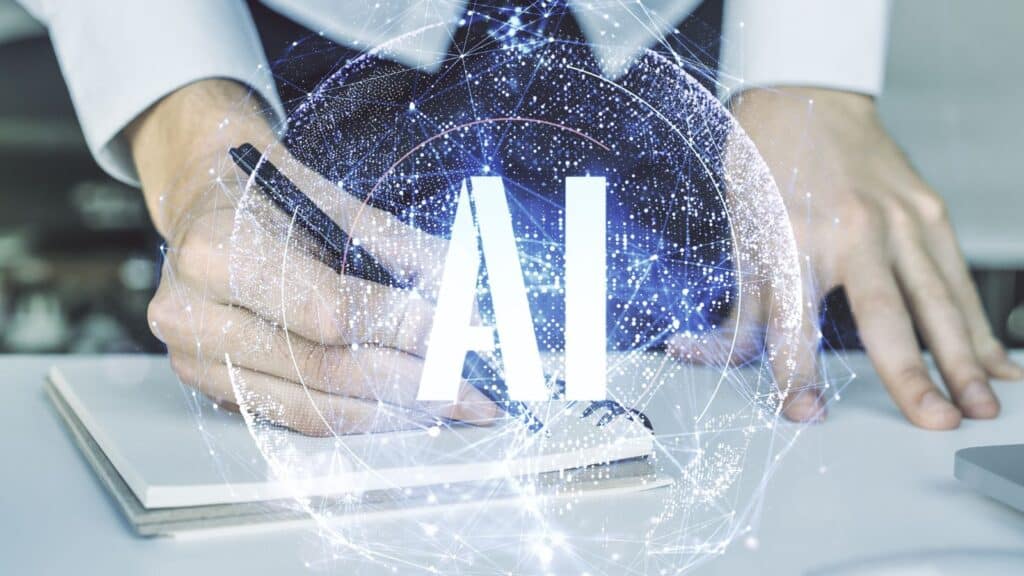This article presents 5 points to consider if you want to increase employee productivity.
As we find AI increasingly present in our day-to-day activities, workers are put under great pressure to keep up with the emerging trend in technology. While it is important to acknowledge these improvements as integral parts of our future and an important factor for businesses to thrive, one cannot deny that it has brought a threat to the workforce.
While AI allows computers to efficiently learn from and take actions based on data more than humans and drives down the time to complete a task – it is nothing to be threatened of. AI will not take away jobs but instead help workers perform better and reimagine jobs. It is not the complete solution since it is only data-driven. The combination of human skills and the integration of AI into the workplace will forge paths to more productive and sustainable business processes.
It’s a tricky act balancing business and technology but forward thinkers are banking on artificial intelligence to help increase employee productivity. Here’s an overview of some of the advances that companies can adopt to capitalize on the underway disruption that AI brings.
1 – Automating day-to-day tasks to increase employee productivity
Minimize the number of time employees spends on routine tasks to help them cut down on laborious work and ease their burden. Each of our jobs entails repetitive and dragging duties that undoubtedly bring mental strain. These recurring tasks are everything that has to do with following a process such as paper works, keeping track of attendance, creating presentations, word processing, answering calls, and scheduling appointments to name a few. Getting rid of any manual physical task could be easily done through automation. All that is needed is to identify the task that needs to be solved, has a clear procedure to follow, then use an automation tool to automate these tasks.
Automating low-value duties allows professionals more time to contribute to strategic planning at the organizational level and focus on their functional skills. The time saved by integrating artificial intelligence in workflow allows employees to be more productive instead of being buried under dozens of administrative tasks – a sure way to burnout and aimless work. With automation, employees will have more time to spend a break from work or to upskill their creativity, improve interpersonal relations, practice empathy, and resolve conflicts which in return give staggering results in the long run.
2 – More accurate forecasting
Saving time, cutting costs, and improved the accuracy of reports are some of the ideal targets of artificial intelligence. Optimize forecasting instead of manually correlating data by incorporating AI solutions into the process. Integrating these kinds of systems will collect, weigh, organize, and analyze complex data through the use of an algorithm that will yield reports and forecasts. These prediction engines can be designed strategically for a particular use which then can be helpful for professionals to make use of in decision making.
With so much time and resources spent on manual processes, passing the task of consolidation and prediction of trends will give companies a new dimension to have greater visibility of where the team or the business as a whole is heading. This improvement will then unlock more time and assist business leaders to center their efforts on employee productivity, business challenges, and strategic planning.
3 – Refine Human Resource workflow
Artificial intelligence quickly transforms the way businesses operate. One of the integral improvements this emerging technology can improve is the way human resource representatives navigate through their workflow. AI-powered assistants can automate HR administration at a large scale. Automation can free up consuming HR tasks such as updating employee databases, preparing contracts, attendance management, monthly payslips, computation of tax deductions, and monitoring leave balance.
On the other hand, if employees need certain information from HR on a day-to-day basis, a conversational AI or most commonly known as AI chatbots can automate human-like messaging. This recognizes speech and text, deciphers it, and responds in a way that humans can understand. Businesses can deploy this solution to improve response time to standard employee queries thereby lifts the load from HR representatives of being distracted just to answer every question of each employee – one of the most common tasks that impede productivity.
4 – Streamline recruitment
AI technology can streamline application processes by designing a more user-friendly recruitment process. Candidates can easily file their applications by answering digital forms or assessment exams. Through automated screening of applicants, AI speeds up the process by matching information such as skills, education, and experience to identify qualified employees easily rather than spending time and energy to manually assess a fresh talent.
In employee acquisition, having digital assistance is more likely to accomplish selection in a pool of candidate’s double-time which effectively reduces abandoned application – a strategy to deliberate if the team receives numerous applicants in a day. Professionals assigned in recruitment can use this enhanced process to also sort out pre-screening, scheduling interviews, answering common applicant’s questions, and keeping a database of past applicants thereby making the processes efficient and smooth.
5 – Learning and development
Given how fast technology advances, learning, and development must remain accurate and relevant. Companies need to ensure training tools and learning methodologies can keep up in our fast-changing world.
Whether one is assigned in people management or career development, to take advantage of artificial intelligence, managers need to make initiatives to continually promote the building skills and qualities of each employee. With the help of AI, volumes of data can be processed to extract and recommend valuable content suitable to what the employees need to learn. With the stored data of worker’s interests, current skill sets, and motivations, AI can create a tailored learning path.
AI mentor is also a concept that places in proximity AI and machine learning to mentor learners in different aspects of life. AI mentors provide the means of asking questions to determine what a person needs to know, identify the gap, optimize learning techniques, assess, and give feedback. This makes acquiring new knowledge and skills suitable and time-saving.
6 – Help with improving the comfort of the work environment
If you have work from home employees; who doesn’t these days; you may want to encourage them to improve their work environment at home. Here are some ideas. You may want to subsidize some of the costs or remind employees of tax breaks the government may offer for home offices.
About The Author:
Regi Publico is a full-time writer based in Manila who is also an artist for fun. She takes pride in her towering collection of books and loves reading about anything under the sun. She is passionate about sharing her knowledge through every article that she writes.
If you enjoyed this post about how to increase employee productivity then please consider sharing it. If you would like to leave a comment use space below or contact me via the contact form.
[avatar user=”mike” size=”thumbnail” align=”” link=”file”]Mike Gaudreau is the owner of The Wealthy Boomers, a site devoted to helping seniors make money online. Mike resides in Montreal Canada.[/avatar]
You should assume the owner of this website probably has an affiliate relationship and/or another material connection, to any suppliers of goods and services that may be discussed here and may be compensated for showing advertisements or recommending products or services, or linking to the supplier’s website.




